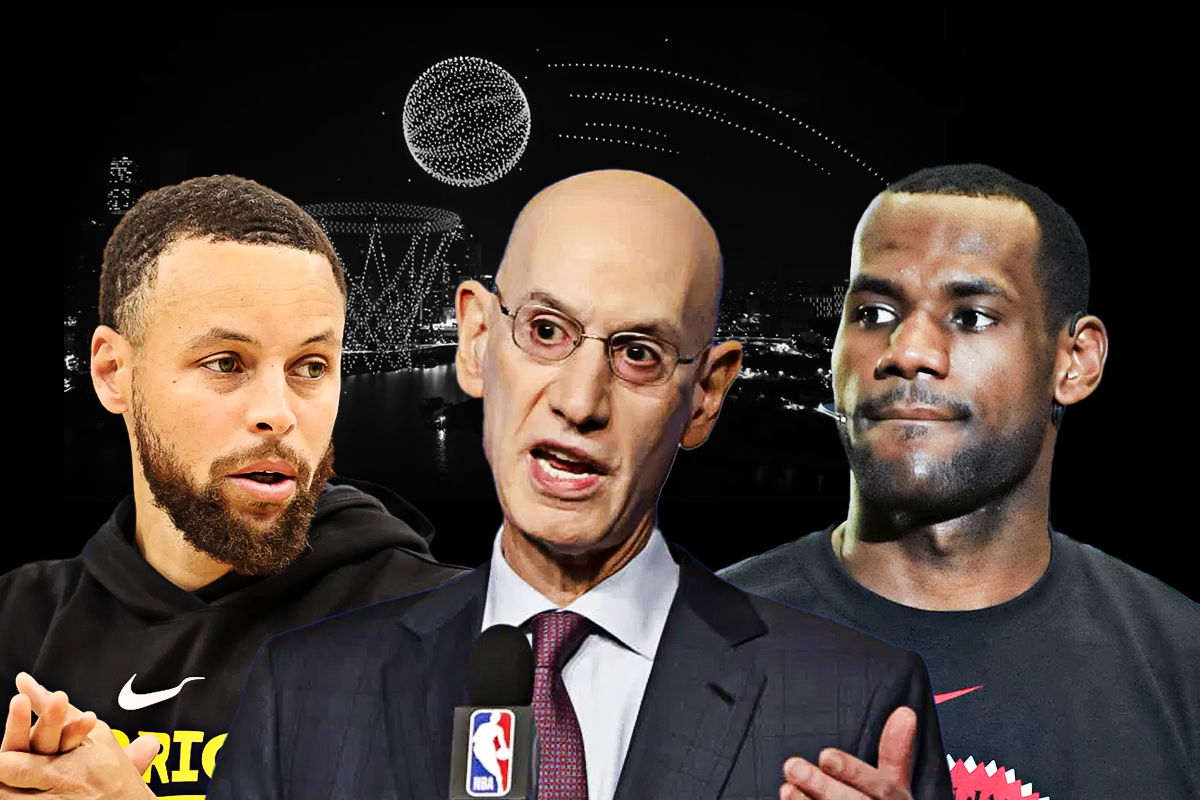
Imago
credits: Imagn

Imago
credits: Imagn
LeBron James has been in plenty of headlines over the years, but few placements felt as politically charged as this one: “Basketball is a Bridge that Connects Us,” an essay under the Akron Hammer’s name, appearing in the Chinese state-run People’s Daily newspaper. Think about that for a second. One of the NBA’s biggest global icons suddenly published a first-person write-up in a paper that’s usually reserved for official messaging? Why? Does Adam Silver have anything to do with it? What does it really mean? And why now? So many questions, but not to worry, I am here to present a timeline of sorts.
Watch What’s Trending Now!
To understand this news, you have to go back in time. The NBA and China didn’t just stumble into each other, but they built one of the most lucrative sports relationships on the planet. Starting in August 1979, when the Washington Bullets played a series of games in China, basketball quietly began planting its roots… Then, by the early 2000s, those roots had become an empire, thanks largely to one man: Yao Ming.
Ming’s arrival in the NBA as the No. 1 pick was a cultural explosion, to say the least. Every Rockets game turned into must-watch television in China. Jerseys sold out. Kids picked up the game. The NBA, much more than just sports entertainment, became a bridge.
ADVERTISEMENT
However, what goes up can fall just as fast…
In October 2019, a single tweet from then-Houston Rockets GM Daryl Morey supporting Hong Kong protesters sent shockwaves through that bridge, which had taken years to build piece by piece. And just like that, the Rockets and the league’s merchandise vanished from Chinese e-commerce sites.
State-owned Chinese broadcaster CCTV yanked NBA games off the air. It was as if decades of goodwill disappeared overnight. And in the middle of it all stood Adam Silver, the league’s commissioner, trying to balance free expression at home with billion-dollar business interests abroad.
ADVERTISEMENT
Could the NBA keep both worlds happy? The answer, for years, looked like a hard no.
Now fast forward to September 2025, where LeBron’s face and name showed up in a powerful Chinese newspaper. That’s not just a media hit. That’s a message. But were they really LeBron’s own words? According to ESPN, no. The so-called essay was actually a carefully packaged piece, compiled from group interviews LeBron gave during stops on his overseas tour. The Associated Press had initially reported that LeBron had personally written an op-ed, sparking outrage in conservative media and outlets. That report was later deleted when the player’s reps shed light on the matter.
ADVERTISEMENT

Imago
Apr 27, 2025; Minneapolis, Minnesota, USA; Los Angeles Lakers forward LeBron James (23) talks with his coach during a stoppage in play against the Minnesota Timberwolves in the second quarter during game four of first round for the 2025 NBA Playoffs at Target Center. Mandatory Credit: Matt Blewett-Imagn Images
In reality, here’s the real question amid the chaos: What role can one player really play in fixing a geopolitical mess?
If there’s anyone positioned for it, it’s got to be LeBron James. He’s been to China close to 15 times, each trip a mix of basketball shenanigans, Nike events, and fan meetups. His popularity there arguably reaches similar levels as Kobe Bryant’s legendary standing. His Nike campaigns were practically billboards for American culture in Chinese cities. So when he says, “Basketball is not only a sport, but also a bridge that connects us,” it’s not your regular branding.
ADVERTISEMENT
It’s rather part of the NBA’s strategy to reopen a door that’s been closed since 2019. But you know the saying: if one door closes, another opens. Well, I say, if one door closes, open it back up! That’s exactly how a door works. And that’s exactly what Adam Silver seems to be trying to do.
Looking back at the history of NBA-China relations
The NBA’s relationship with China has always been about more than points and rebounds. Yao Ming was the foundation for sure, but stars like Kobe Bryant turned basketball into a religion. Bryant’s untouchable popularity still lingers as murals of him stand tall in Chinese cities. The league leaned into this by holding preseason games in China, signing sponsorships with tech giants like Tencent, and building an audience that once reached hundreds of millions, even valued at around $150-$170 million in 2010 and at over $4 billion by 2018.
ADVERTISEMENT
Then came the unexpected Daryl Morey tweet in which he said, “fight for freedom, stand with Hong Kong,” and things went downhill… The TV broadcasts stopped, preseason trips ended, and the NBA learned what it meant to lose access to a market it had spent decades cultivating.
That’s what makes the latest LeBron move so important…
Top Stories
LeBron James Stats on His Birthday: How NBA Icon Has Performed on December 30th
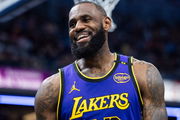
Did Michael Jordan Call LeBron James The GOAT on His 41st Birthday? Fact Checking Viral Social Media Post
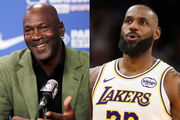
Is Joel Embiid Playing Tonight? 76ers vs Grizzlies Latest Injury Report (Dec 30)

Is Christian Braun Dating Sydney Sweeney? Fact-Checking Viral Rumor About Nuggets Star
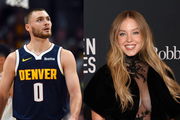
WNBA Free Agency 2026: The Most Likely Landing Spots for the League’s Top Movers
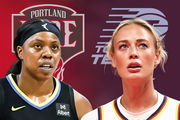
ADVERTISEMENT

It’s the first visible sign of reconciliation. Not a handshake behind closed doors, but a public-facing piece in China’s most influential newspaper. And if history has shown anything, it’s that star players carry more diplomatic weight in China than executives or even politicians. Just look at how Stephen Curry was received earlier this year with a full 5,000-drone show in his honor. These are exactly the kind of cultural exchanges that help make up a flawed relationship.
ADVERTISEMENT
Still, there’s no denying the risk…
Future Outlook: NBA Players’ Role in Helping Adam Silver With the NBA-China Fallout
LeBron has faced criticism in the past for comments that seemed overly cautious about China, especially when free speech issues came up. About Morey’s tweet, King James said that he was “either misinformed or not really educated on the situation.”
ADVERTISEMENT
Now, in stepping into this spotlight, he becomes both an ambassador and a target. Does this open him up to political backlash in the U.S.?
Possibly.
But from a business standpoint, it seems clear why he’s doing it. China is too big a market for the NBA, or Nike, for that matter, to lose. Reconnecting means jerseys flying off shelves again, live games back on primetime, and the return of billion-dollar sponsorships. That’s why Adam Silver & Co. are not relying just on LeBron, especially with a new $75 million streaming deal coming their way.

Adam Silver himself has pushed the message that “sports can be a unifying force that focuses on what we have in common as human beings rather than our differences.” The NBA is returning to China for preseason games in 2025 for the first time since 2019, signaling that the frost is melting. Further, the Mavs’ governor, Patrick Dumont, the Chief Operating Officer and President of the Las Vegas Sands, was an integral driver of the NBA’s new Macao partnership, ESPN sources said. This collaboration will include new youth development programs and initiatives aimed at making a social impact in Macao.
Did you know: From 2004 to 2019, 17 NBA teams played a total of 28 preseason games in China. The NBA played two preseason games at what is now called the Venetian Arena in 2007, when the Orlando Magic faced the Chinese men’s national team and the Cleveland Cavaliers.
Meanwhile, stars like Stephen Curry and even Draymond Green are part of the push. The league knows it has to play this carefully, lean on cultural diplomacy, but avoid stepping into political minefields. What about Kobe Bryant’s enduring influence, though?
It’s a reminder that while politics can disrupt broadcasts and block sponsorships, the emotional connection between Chinese fans and their NBA heroes runs stronger. Kobe’s legacy proves the NBA is not starting from zero. The roots are still there. They always will be. The challenges remain, though.
Censorship, rising nationalism, and unpredictable geopolitical tensions all threaten this fragile reboot. But in the meantime, LeBron’s supposed presence in a Chinese state newspaper marks something new.
So again, why does it matter?
Because this isn’t just about one player giving a few quotes. What it might be is – Adam Silver testing the waters for a grand NBA re-entry into a market that once helped drive its global boom. And if LeBron James is going to play the ‘face’ role again in 2025, it’s a reminder that in the NBA, the biggest stars are the diplomats with sneakers on. What do you think?
ADVERTISEMENT
ADVERTISEMENT
ADVERTISEMENT

